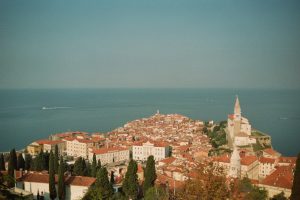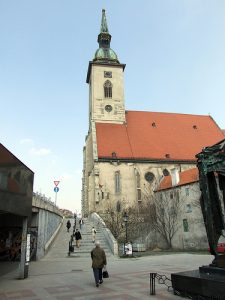Piran – Slovenia is a town in the country regarded by many as the
most beautiful seaside town among all coastal towns in Slovenia.
Abundant in medieval structures, visitors coming here for the first time
feel as if they have stepped back in time.
Location
Piran – Slovenia is located in the south-west parts of the country,
on the tip of the peninsula of Piran which is situated on the Gulf of
Piran. It is bordered by Croatia on its southern side and Izola as well
as Koper on its eastern side.
Getting There
As there are no airports in Piran – Slovenia, the nearest airport
that you can fly in to is the one in Trieste. From Trieste, you can
catch a bus going to Piran which will take about one hour.
There are likewise bus services from other parts of Slovenia that ply the route going to Piran.
What to See
As mentioned earlier, Piran – Slovenia is teeming with beautiful medieval structures.
The Piran Town Walls were constructed around the town to protect it
from foreign invasion. A huger part of this fortification still stands
today and is well-preserved.
There is also the Venetian House designed in Venetian-Gothic
architectural style. It is said that a very rich merchant had this house
constructed for his mistress.
There is an interesting inscription in the middle of the upper
windows that translates to “let them talk” perhaps owing to this little
bit of information about the house having been built for a mistress.
On
Tartini Square, a plaza named after the famous violinist native to
Piran, Guiseppe Tartini; you can find the violinist’s old house. The
house was first designed in Gothic style back in 1384 but was later on
renovated to the Neo-Classical architectural design.
Incidentally, you can also find a monument in honor of Tartini right on the square named after him.
Also, do not miss visiting the Church of St. George which gives you a good panoramic view of the city and its harbor.
Brief History
Between 178 BC and 177 BC, the peninsula of Piran was annexed to the
Roman Empire. During the seventh century, under Byzantine sovereignty,
the town became one of the most heavily-fortified towns in the country.
In the year 1812, the Battle of Pirano took place within the waters
surrounding the peninsula; between French and British naval forces. The
French lost the battle as they surrendered to British Captain, John
Talbot.
In October of 2010, Piran elected Peter Bossman as its town mayor; a
native of Ghana who moved to Piran – Slovenia in the latter years of the
‘70s. This was a historic event as this is the first time that a black
mayor was ever elected in Slovenia.
Cost
Accommodations in Piran – Slovenia are very limited. There is a
hostel and a youth hotel within Piran and rooms here cost about €22 to
€25. Nearby Piran however, you can find several excellent
accommodations.
Mid-range hotels generally cost about €55 up to €70 per person, per
night; while more luxurious accommodations range from €74 up to €134 per
person, per night.
Other Information
The best way to explore Piran – Slovenia is on foot as the town is
quite small and you can take your time admiring the sights as you walk
through its paths.






